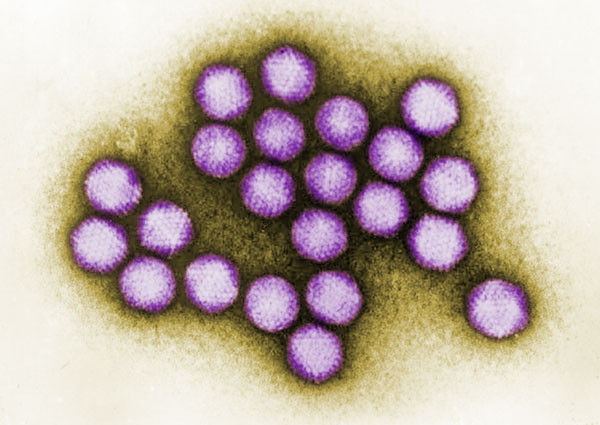Raw Sewage Teems with Unknown Viruses

A whole universe of mysterious viruses remains hidden in our world, according to a new study that finds evidence of an immense and previously unknown variety of viruses living in raw sewage.
Only about 3,000 viruses are recognized, but so-called metagenomic studies — in which researchers sequence the genetic material contained in an environmental sample, like soil or sewage — have indicated this is only a small fraction of the viruses that share our planet, according to the researchers writing in an article published Oct. 4 in the journal mBio.
Viruses are tiny infectious agents, or packets of DNA or RNA, that use a living cell's machinery to copy themselves, so they are generally not considered to be alive. Numerous viruses piggyback on every type of living organism they infect, from bacteria to humans. And the inactive forms of viruses, called virions, are found throughout the environment. Viruses are everywhere, but so far only about 3,000, from 84 viral families, have had their genetic codes sequenced, write the researchers, led by Paul Cantalupo of the University of Pittsburgh. [7 Devastating Infectious Diseases]
To find a window into viral diversity, the team collected raw sewage from Pittsburgh, Pa.; Barcelona, Spain; and Addis Ababa, Ethiopia, and sequenced the genetic code contained in these samples.
They looked at untreated wastewater, because they knew it would contain a high diversity of viruses. In addition to the viruses contained in the biological waste deposited in the sewage, it also supports the growth of other species, like insects, rats, plants and other microorganisms, each with their own viruses to add to the mix.
Within the samples, they found 234 known viruses belonging to 26 different viral families. Seventeen of these infected humans, and others are known to target plants, insects, algae and bacteria. They also found evidence of new viruses from 51 different families. This makes raw sewage home to the most diverse viral community examined, they write.
But the vast majority of genetic sequences bore so little resemblance to known viruses that they could not be placed with known groups of viruses, they write. "These results show that the vast majority of the viruses on Earth have not yet been characterized. Untreated wastewater provides a rich matrix for identifying novel viruses and for studying virus diversity."
Sign up for the Live Science daily newsletter now
Get the world’s most fascinating discoveries delivered straight to your inbox.
Some other discoveries turned up in the wastewater:
- Bacteria-attacking viruses dominated the viral population they found in the sewage, outnumbering the known ones by 30 to 1. [Invisible World: All about Microbes]
- Of the viruses that attack more complex organisms, plant viruses dominated.
- A large number of insect viruses, including those that infect cockroaches, flies and mosquitoes, were present in all samples.
- They also identified several rodent viruses, including strains closely related to a newly identified rat hepatitis E virus.
- They detected 17 viruses known to infect humans in the three samples. These viruses included a number that can cause diarrhea or gastrointestinal illness, including adenovirus, astroviruses and Norwalk virus, bocavirus, picobirnaviruses and klassevirus.
Unknown viruses like those found in sewage probably play many as yet unidentified roles in human health and the environment, according to Michael Imperiale, a researcher at the University of Michigan who edited the study for mBio, which is published by the American Society for Microbiology.
While some human viruses found in the sewage may be opportunists, lying in wait for their host's immune system to break down, others may be harmless or even helpful. Other viruses may be benign or even helpful, he said.
You can follow LiveScience writer Wynne Parry on Twitter @Wynne_Parry. Follow LiveScience for the latest in science news and discoveries on Twitter @livescience and on Facebook.










